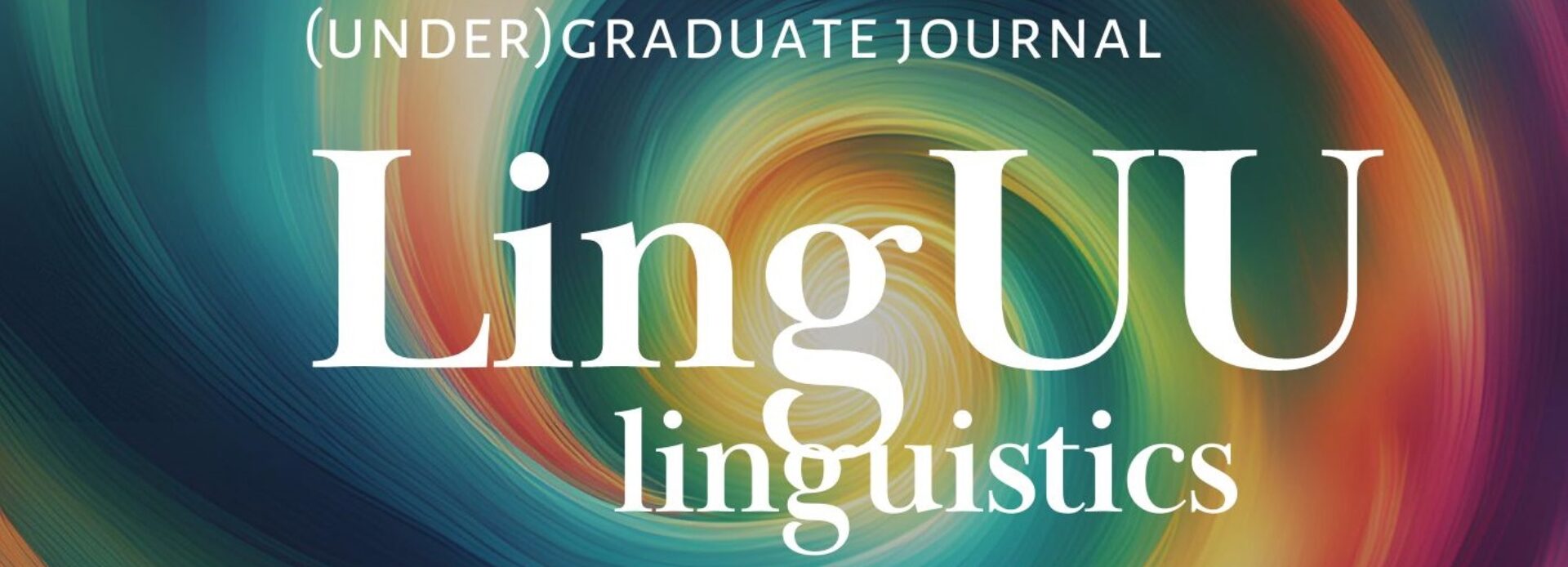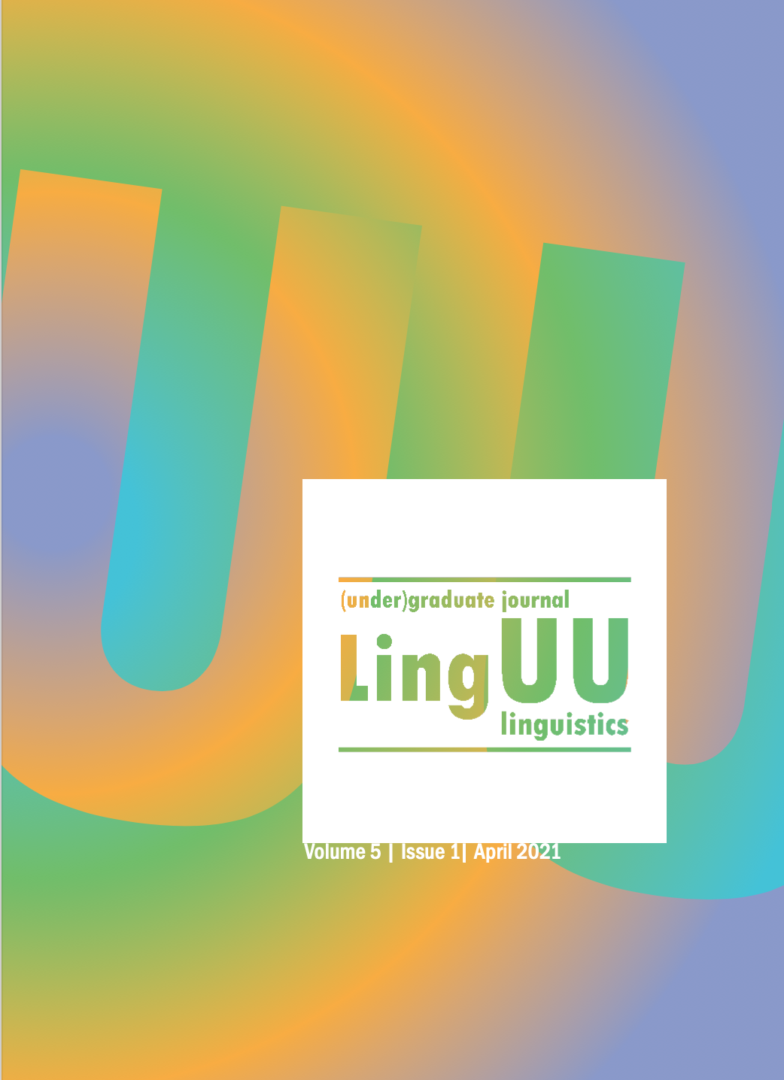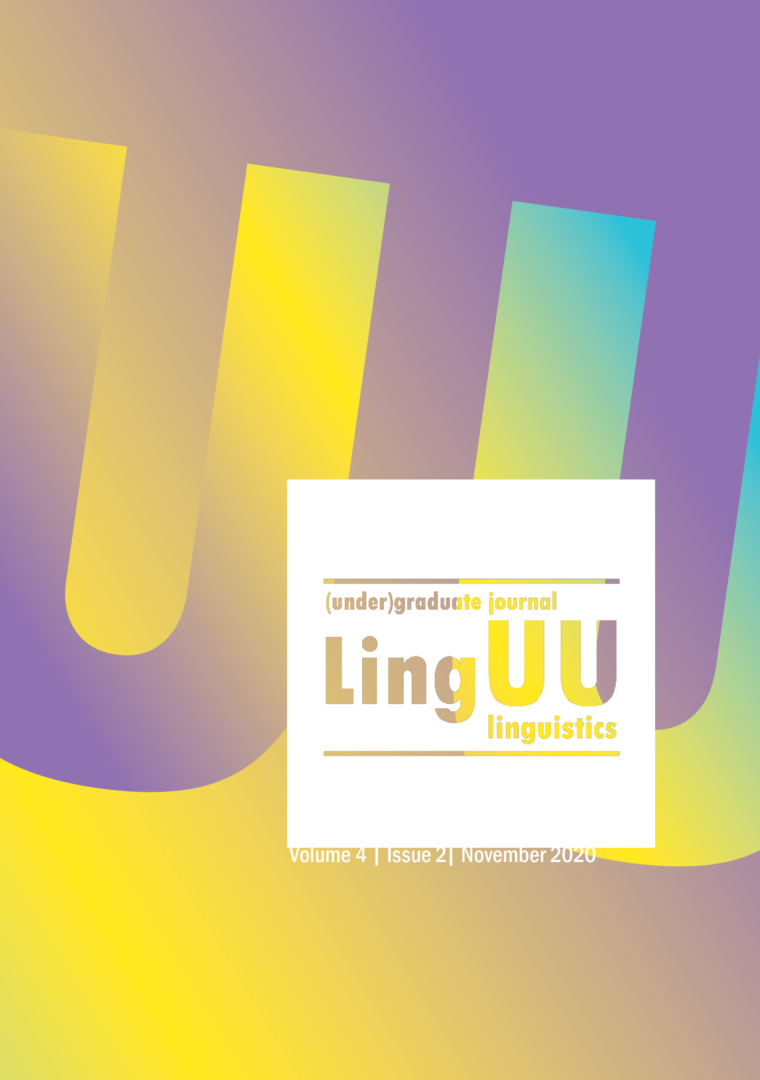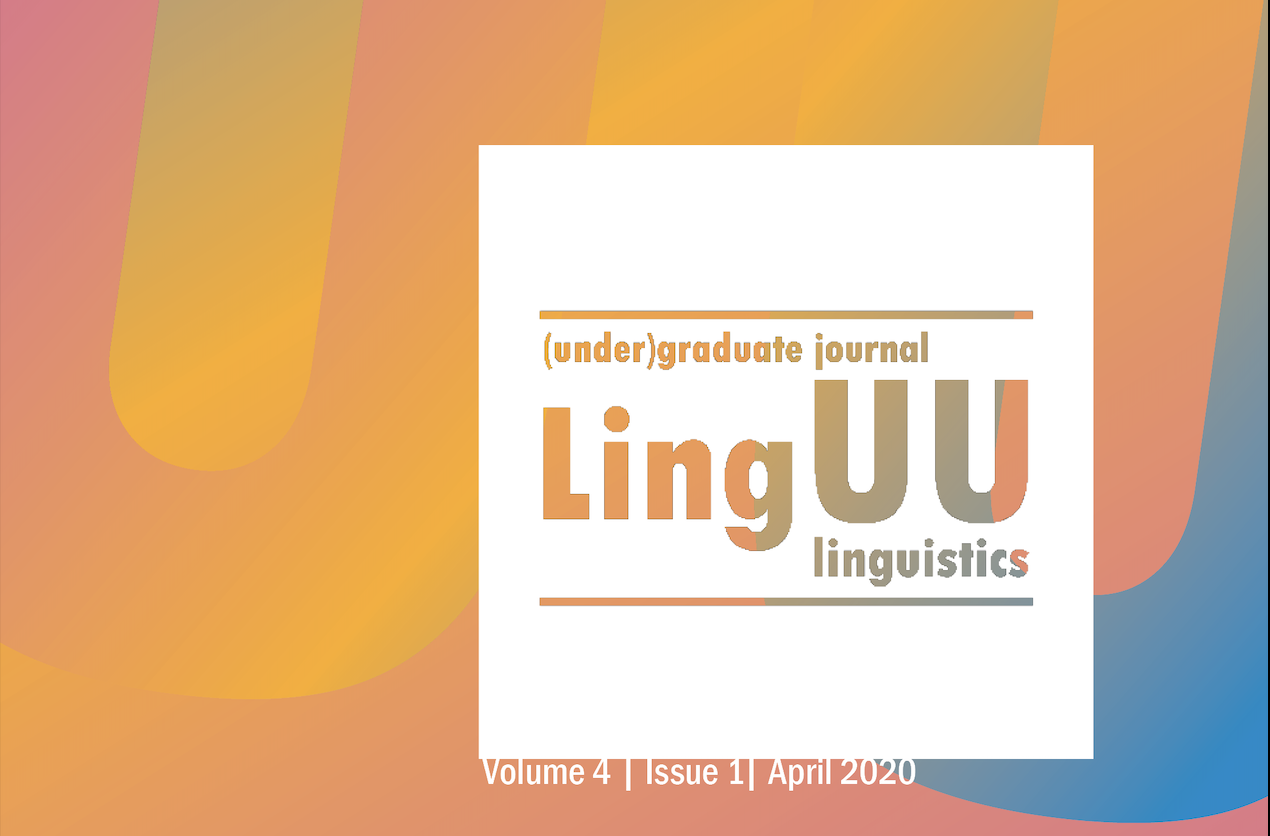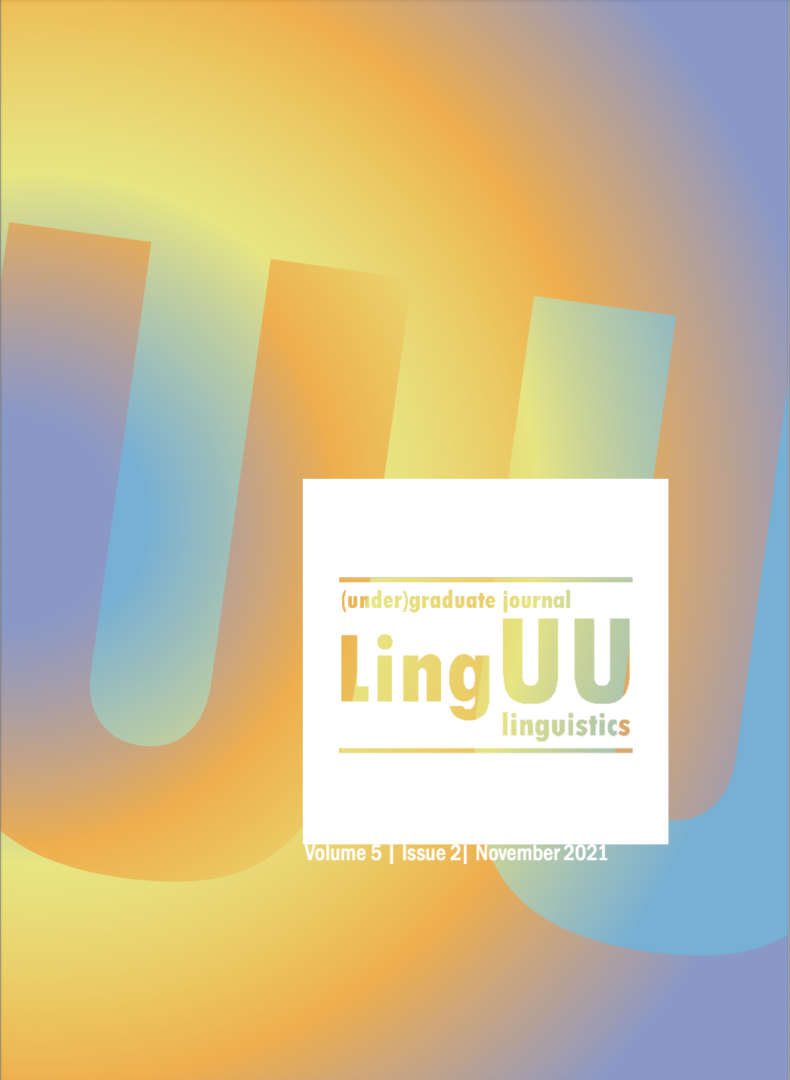
LingUU 5.2 is out now! The new issue of LingUU Journal features articles on various linguistic topics, written by students from different BA and MA programmes. Download the entire issue, browse through the contents, or order a paper copy (while supplies last).
Over the past two years, one of the most prevalent discussion topics in conversational settings has been the Covid-19 pandemic and its impact in our lives. Ellie Passmore touches upon this quite relevant topic, investigating whether there are differences in people’s rhetoric for Covid-19 based on their political leaning and age cohort in the USA. Exploring the possible effect of these two factors in Covid-19 language could have important implications in the improvement of online information services on that matter, targeting specific groups of people.
A paper by Angela Radić explores Pro-Drop in Dutch Heritage speakers of Serbian and to what extent these speakers master null subjects. Heritage speakers are an interesting subgroup of bilinguals, where the heritage language is only spoken at home (or in a community), and a second language is used in all other contexts. This means that heritage speakers use their heritage language at home and it is interesting to investigate, because it results in specific language patterns. This research explored the influence of L1 Dutch, a non-Pro-Drop language on L2 Serbian, a Pro-drop language and to what extent the pronominal subject is omitted. The results show that these speakers have no preference for either omission or inclusion.
Kalyon et al. ’s paper aims to find out if practicing code-switching in the Southeast Asian countries is similar to the one in the Northeastern countries, focusing on Indonesia.. English being the most switched-to language, interestingly, it is used frequently in Asian countries in recent years. Throughout the analysis section, several questions about the intensity of English and Indonesian language preferences on Indonesian TV and in other parts of life such as medical environments and schools were covered. To embody this, a survey was created to record responses from Indonesian locals. In the present study, the usage rates and forms of code-switching between English and Bahasa Indonesia are analyzed, discussed, and compared with similar uses of the concept in other cultures and countries.
Marijke van den Berg’s paper provides a critical review on Hu’s (2021) suggestion that subjectivity in Dutch connectives dus and daarom is not accompanied by prosodic marking. The author discusses possible limitations in Hu’s methodological approach which could have led to this conclusion. Crucially, she proposes a reanalysis of Hu’s findings, as well as an alternative experimental design which would control for the methodological weakness in Hu’s study.
Eleni Zimianiti investigates adjectival placement in Griko, an Italian-Greek variety, focusing on measuring adjectives in particular. Based on a written text from the 20th century, it is shown that adjectives in Griko could be found in prenominal position, which closes a data gap in the diachrony of the variety and highlights the strong contact of Greek and Italian.
Central in this paper by Carla Rijlaarsdam is the phenomenon of lexical cloning, which is discussed in terms of (neo-)Gricean principles. This paper focuses on the question in what insights the (neo-)Gricean principles can give on lexical cloning and its markedness. When a speaker uses lexical cloning in a conversation, it can be problematic to analyze it in terms of the principles of Grice. The form needs to be considered as a marked message, even though its meaning is not always marked.
There are many reasons why people want to learn a language and they are motivated by different elements. This article by Stephanie Bergmann explores the motivations and orientations of non-native Arabic learners in Jordan, with a comparison between colloquial Jordanian Arabic learners and Modern Standard Arabic learners. What are their reasons, interests, and attitudes to learn these languages? Through surveys and interviews it was found that the orientation integrativeness was more important than instrumentality for learning Arabic. It was also found that learning colloquial Jordanian Arabic was more important for communicative reasons and to be able to understand everyday conversations, but Modern Standard Arabic is also useful and play an important role in understanding the more standard media.
Renhao Pei’s paper is about scalar implicature and different pragmatic models that account for it. It discusses how four well-known pragmatic theories (traditional Gricean framework, Signaling Game, Iterated Best Response and Bayesian Inference) account for scalar implicature through concrete examples. By comparing how different models handle the same question, the paper demonstrates the merits and flaws that each model has, and how newer and more sophisticated models are proposed to tackle the problem that the previous model cannot solve.
This paper by Lotte Willemijn van Koppen explores the use of reflexive pronouns in L1 German speakers who speak Dutch. The German sich and the Dutch zich (‘-self’) might look the same but behave differently in both languages. Where in German sich is used in most reflexive contexts, Dutch makes a distinction between zich and zichzelf (‘himself’). This might lead to an overuse of zich by German speakers learning Dutch. An experiment was conducted where German speakers with varying degrees of Dutch proficiency had to correctly fill in zich or zichzelf in Dutch sentences to see if they could make the distinction between the two. The results show that there is a preference to use zich over zichzelf and it appears that proficiency levels play a role in this.
In this second special edition of Intern Extern two internships are discussed that were carried out during the pandemic. Agnė Župerkaitė internet at research project Drongo 2.0 at the Radboud universiteit. She came across it accidentally when she scrolled through websites of several universities. Eventhough she never saw her host supervisors in real life because of the pandemic, she was involved in every stage of the research. Carolin Tyrchan pursued an individual research project on syntax at the University of Cambridge. Despite not being able to visit the United Kingdom, she did not want to miss out on this opportunity.
The Daily Linguist of this issue highlights talks and panels that were posted on YouTube. Furthermore, the Language Neuroscience Podcast and the MPI Talking blog are highlighted.


